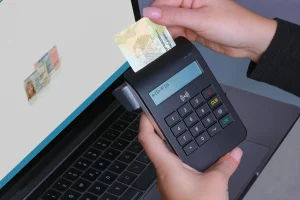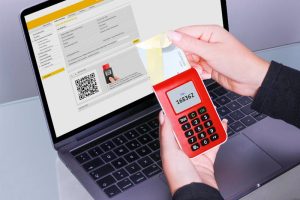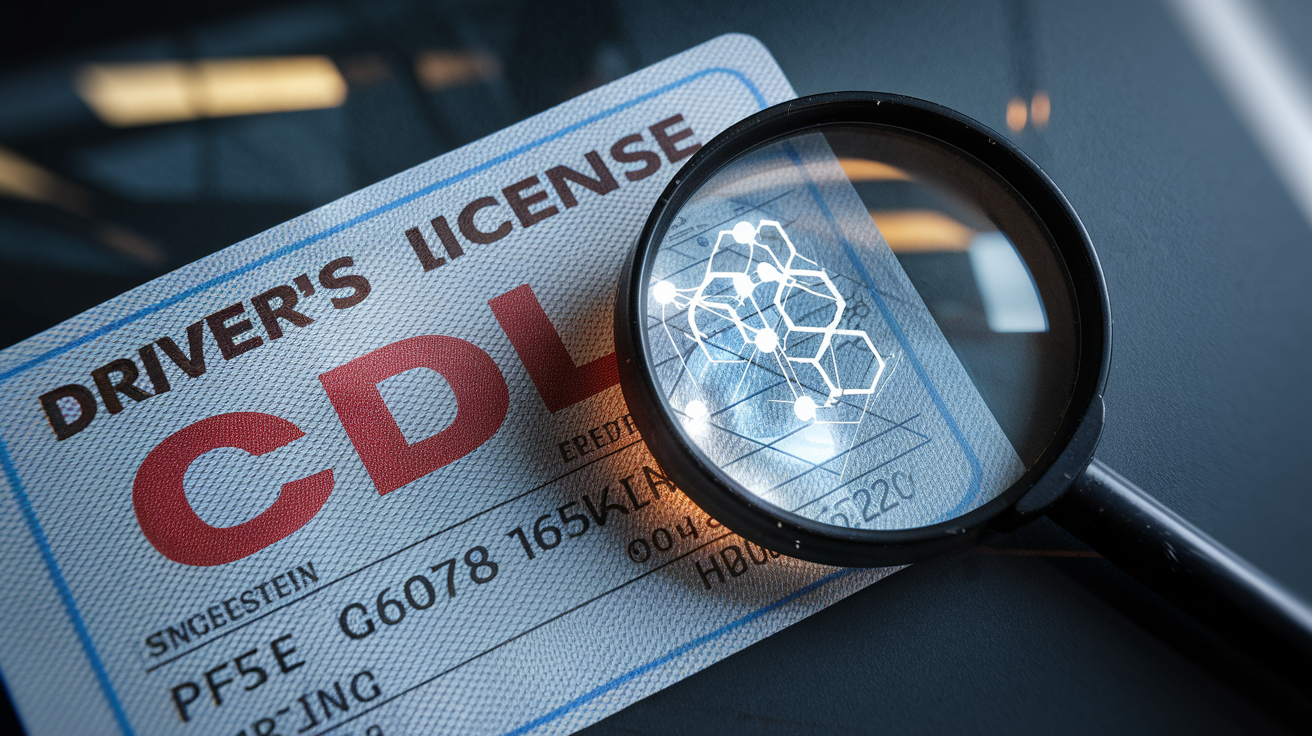Have you ever found yourself fumbling through your wallet, searching for your ID card in a sea of plastic? Or worse, realized you’ve left it at home when you need it most? 😱 In today’s digital age, carrying physical ID cards is becoming a thing of the past. Enter the world of virtual ID cards with reflector stickers – a game-changer in personal identification and security.
Imagine having your ID card always at your fingertips, securely stored on your smartphone, and enhanced with cutting-edge reflector technology. 🌟 Not only does this solution offer unparalleled convenience, but it also provides an extra layer of security that traditional cards simply can’t match. Whether you’re a business looking to modernize your employee identification system or an individual seeking a more efficient way to carry your credentials, creating a virtual ID card with a reflector sticker is the way forward.
In this guide, we’ll walk you through the step-by-step process of creating your very own virtual ID card, from choosing the right software to integrating that all-important reflector sticker. Get ready to revolutionize the way you think about identification and join the ranks of those embracing the future of personal security. Let’s dive in and discover how you can create a virtual ID card that’s not just functional, but truly cutting-edge! 🚀
Understanding Virtual ID Cards

Benefits of virtual ID cards
Virtual ID cards offer numerous advantages over traditional physical cards:
-
Accessibility: Always available on mobile devices
-
Cost-effective: No printing or replacement costs
-
Eco-friendly: Reduces plastic waste
-
Easy updates: Information can be modified instantly
-
Enhanced security: Difficult to counterfeit or lose
Key features of a virtual ID card
A well-designed virtual ID card should include:
| Feature | Description |
|---|---|
| Personal information | Name, photo, ID number |
| QR code | For quick scanning and verification |
| Digital signature | To ensure authenticity |
| Expiration date | For time-sensitive credentials |
| Reflector sticker | Adds visual security element |
Common uses in various industries
Virtual ID cards are increasingly adopted across different sectors:
-
Corporate environments:
-
Employee identification
-
Building access control
-
Time and attendance tracking
-
-
Educational institutions:
-
Student and faculty IDs
-
Library access
-
Campus event management
-
-
Healthcare:
-
Patient identification
-
Staff credentials
-
Visitor management
-
-
Events and conferences:
-
Attendee badges
-
VIP access control
-
Session tracking
-
Virtual ID cards with reflector stickers are becoming the standard for secure, efficient identification. As we explore the process of creating these digital credentials, let’s first look at choosing the right software for your needs.
Choosing the Right Software

Comparison of popular virtual ID card creators
When choosing software for creating virtual ID cards, it’s essential to compare the top options available. Here’s a comparison of popular virtual ID card creators:
| Software | Key Features | Price Range | Ease of Use |
|---|---|---|---|
| IDCreator | Custom templates, QR code support | $9.99 – $29.99/month | Beginner-friendly |
| Canva | Drag-and-drop interface, extensive library | Free – $12.99/month | Very easy |
| Adobe Spark | Professional designs, brand kit | Free – $9.99/month | Intermediate |
| ID123 | Batch processing, database integration | $19.99 – $49.99/month | Advanced |
Essential features to look for
When selecting virtual ID card creation software, consider these crucial features:
-
Customizable templates
-
QR code and barcode generation
-
Photo editing capabilities
-
Data import/export functionality
-
Mobile compatibility
-
Secure data storage
-
Integration with existing systems
-
Reflector sticker support
Free vs. paid options
While free options can be tempting, paid software often offers more robust features for creating professional virtual ID cards. Consider the following:
-
Free options:
-
Limited templates
-
Basic customization
-
Watermarks on final product
-
-
Paid options:
-
Advanced security features
-
Premium support
-
Bulk creation capabilities
-
Integration with HR systems
-
Ultimately, the choice between free and paid software depends on your organization’s needs and budget. For small businesses or occasional use, free options may suffice. However, for larger organizations or those requiring advanced features, investing in a paid solution is often worthwhile.
Designing Your Virtual ID Card

Selecting an appropriate template
When designing your virtual ID card, choosing the right template is crucial. Consider these factors:
-
Purpose of the ID card
-
Industry standards
-
Company branding guidelines
-
Security requirements
Here’s a comparison of different template styles:
| Template Style | Best For | Key Features |
|---|---|---|
| Corporate | Business | Professional, clean design |
| Academic | Schools | Space for student info |
| Government | Official | High-security elements |
| Event | Conferences | Temporary, eye-catching |
Customizing colors and fonts
Once you’ve selected a template, personalize it with your brand’s colors and fonts. Keep in mind:
-
Use no more than 2-3 colors for a clean look
-
Ensure text is readable against the background
-
Choose fonts that align with your brand identity
Adding logo and branding elements
Incorporate your organization’s visual identity:
-
Place your logo prominently
-
Use consistent brand imagery
-
Include taglines or slogans if applicable
-
Consider watermarks for added security
Incorporating security features
Enhance the security of your virtual ID card with:
-
QR codes for quick verification
-
Holographic overlays (digital representation)
-
Unique identification numbers
-
Expiration dates
Remember, a well-designed virtual ID card balances aesthetics, functionality, and security. With these elements in place, you’re ready to move on to adding personal information to your card.
Adding Personal Information

Essential details to include
When adding personal information to your virtual ID card, it’s crucial to include key details that ensure proper identification. Here’s a list of essential information to consider:
-
Full Name
-
Employee/Student ID Number
-
Job Title or Department
-
Organization Name
-
Expiration Date
-
Contact Information (e.g., email or phone)
Remember to comply with your organization’s policies and privacy regulations when deciding which details to include.
Formatting text for readability
Proper formatting is essential for creating a clear and easily readable virtual ID card. Consider the following tips:
-
Use a legible font (e.g., Arial, Helvetica)
-
Maintain consistent font sizes for different information types
-
Utilize bold or italics to emphasize important details
-
Ensure sufficient contrast between text and background
| Text Element | Recommended Font Size |
|---|---|
| Name | 14-16 pt |
| Job Title | 10-12 pt |
| Other Info | 8-10 pt |
Incorporating a professional photo
A high-quality, professional photo is a crucial element of your virtual ID card. Follow these guidelines for the best results:
-
Use a recent, clear headshot
-
Ensure proper lighting and a neutral background
-
Maintain a professional appearance and expression
-
Crop the photo to focus on the face and upper shoulders
-
Size the image appropriately for the ID card template
By carefully considering these aspects when adding personal information, you’ll create a professional and effective virtual ID card. Next, we’ll explore how to integrate a reflector sticker to enhance security and authenticity.
Integrating a Reflector Sticker

Understanding reflector sticker technology
Reflector sticker technology is a crucial element in enhancing the security and visibility of virtual ID cards. These stickers utilize retroreflective materials that reflect light back to its source, making them highly visible in low-light conditions.
Types of reflector stickers
| Type | Description | Best Use Case |
|---|---|---|
| Prismatic | High-intensity reflection | Outdoor environments |
| Glass bead | Economical, good reflection | Indoor use |
| Metallic | Holographic effect | High-security applications |
Choosing the right type of reflector sticker
Selecting the appropriate reflector sticker depends on your specific needs:
-
Consider the environment where the ID will be used
-
Evaluate the level of security required
-
Assess compatibility with your virtual ID card design
-
Factor in cost and durability
Positioning the sticker on the virtual ID card
Proper placement of the reflector sticker is crucial for optimal functionality:
-
Choose a prominent location, typically a corner or edge
-
Ensure it doesn’t obstruct essential information
-
Consider aesthetics and overall design balance
-
Test visibility from different angles
Enhancing visibility and security
Integrating a reflector sticker not only improves visibility but also adds an extra layer of security:
-
Increases readability in low-light conditions
-
Provides a quick visual verification method
-
Makes counterfeiting more difficult
-
Enhances the professional appearance of the ID card
Now that we’ve covered the integration of reflector stickers, let’s move on to generating and distributing your newly created virtual ID cards.
Generating and Distributing the Virtual ID Card

Exporting in various file formats
When generating your virtual ID card, it’s crucial to consider different file formats to ensure maximum compatibility and versatility. Here are some popular formats to export your virtual ID card:
| Format | Advantages | Best Use Case |
|---|---|---|
| Universal compatibility, maintains quality | Printing, email attachments | |
| PNG | Supports transparency, high quality | Web display, digital wallets |
| JPG | Small file size, widely supported | Email, mobile devices |
| SVG | Scalable without quality loss | Responsive web design |
Remember to test each format to ensure the reflector sticker element appears correctly across different devices and platforms.
Ensuring compatibility with mobile devices
In today’s mobile-first world, your virtual ID card must be easily accessible on smartphones and tablets. Consider these tips:
-
Optimize image resolution for quick loading
-
Test on various screen sizes and orientations
-
Ensure the reflector sticker is visible on smaller screens
-
Create a mobile-friendly version with essential information
Secure distribution methods
Security is paramount when distributing virtual ID cards. Here are some secure methods to consider:
-
Encrypted email attachments
-
Secure file-sharing platforms
-
Company intranet or secure portals
-
QR code distribution for easy access
Implement two-factor authentication for accessing the virtual ID cards to add an extra layer of security. With these measures in place, you can confidently distribute your virtual ID cards with reflector stickers, knowing they’re both accessible and secure.
Implementing and Using Virtual ID Cards

Training employees on proper usage
Training employees on the proper usage of virtual ID cards is crucial for ensuring a smooth implementation and maximizing security benefits. Here are some key points to cover in your training sessions:
-
Accessing and displaying the virtual ID card
-
Security protocols and best practices
-
Updating personal information
-
Reporting lost or stolen virtual ID cards
| Training Topic | Key Points |
|---|---|
| Accessing | – App installation<br>- Login procedures<br>- Offline access |
| Security | – Password protection<br>- Sharing restrictions<br>- Device security |
| Updates | – Information verification<br>- Update frequency<br>- Approval process |
| Reporting | – Immediate notification<br>- Deactivation procedures<br>- Temporary credentials |
Integrating with existing security systems
Seamless integration of virtual ID cards with existing security systems is essential for a cohesive access control environment. Consider the following steps:
-
Assess current security infrastructure
-
Choose compatible virtual ID card solutions
-
Update access control software and hardware
-
Test integration thoroughly before full deployment
Troubleshooting common issues
Addressing potential problems proactively can minimize disruptions and ensure smooth operation of virtual ID cards. Here are some common issues and their solutions:
-
App crashes or freezes: Update the app, clear cache, or reinstall
-
Synchronization errors: Check internet connection, verify server status
-
Scanning difficulties: Clean device camera, adjust lighting, update scanner software
-
Expired credentials: Implement automatic renewal reminders and easy update processes
By addressing these aspects, organizations can effectively implement and use virtual ID cards, enhancing security and streamlining access control processes.
Creating a virtual ID card with a reflector sticker is a modern, efficient way to enhance security and streamline identification processes. By following the steps outlined in this guide, you can design and implement a customized virtual ID card that meets your organization’s specific needs. From selecting the right software to integrating reflector stickers, each step contributes to a robust and reliable identification system.
As you embark on your virtual ID card journey, remember that the key to success lies in careful planning and attention to detail. Take the time to design an aesthetically pleasing and functional card, ensure all necessary personal information is included, and implement proper security measures. By doing so, you’ll create a virtual ID card system that not only enhances security but also improves efficiency and user experience for your entire organization.







